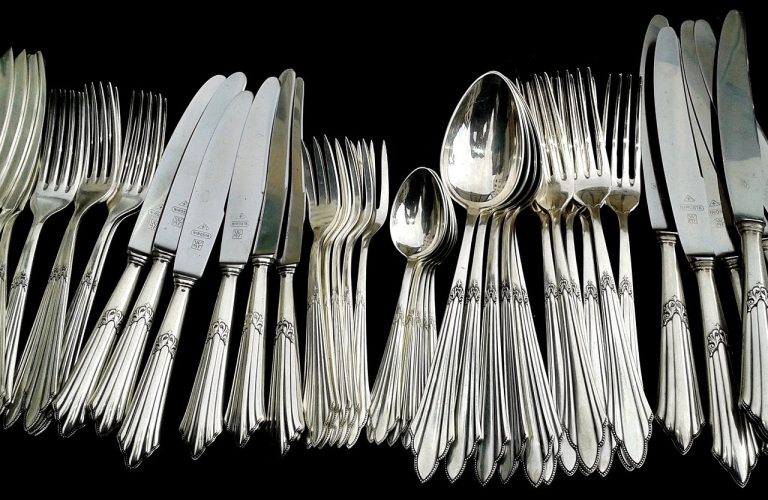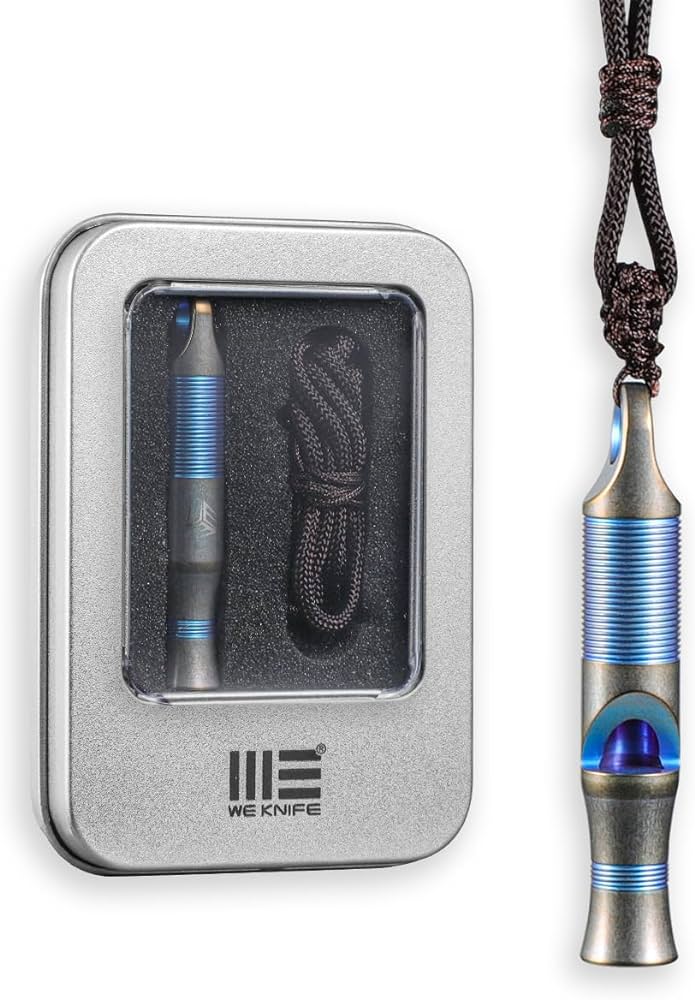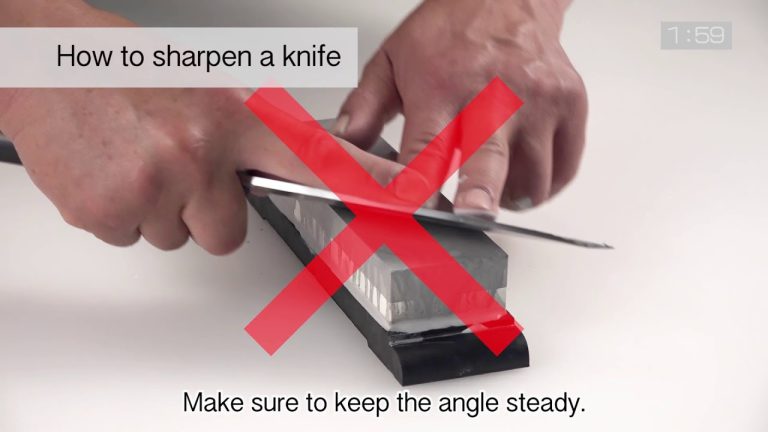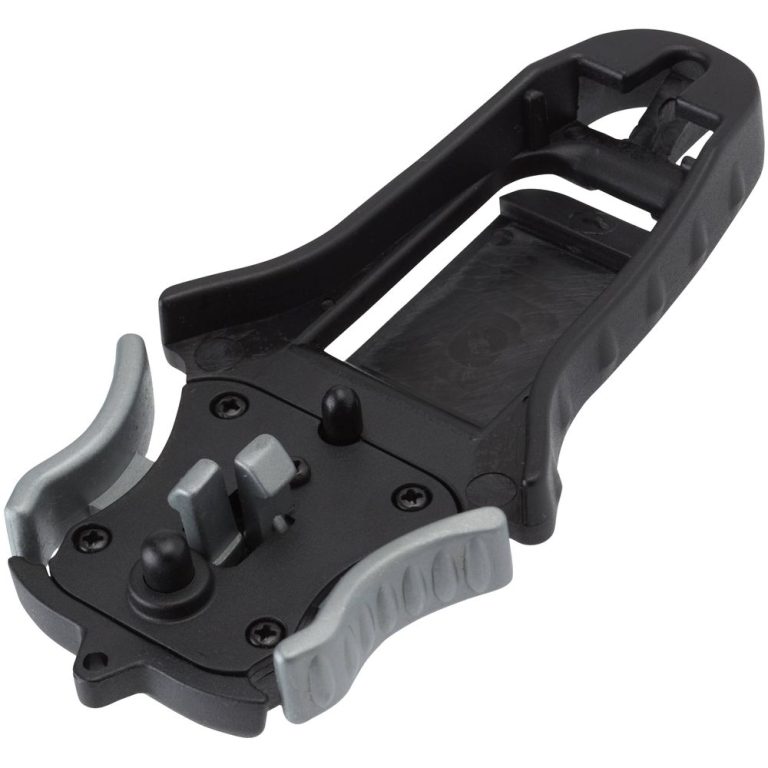Ergonomic Handles for Comfortable Home Knife Use
Ergonomic handles provide comfortable home knife use, reducing strain and improving grip. These handles are designed to fit the natural shape of the hand, offering enhanced control and reducing the risk of accidents.
When cooking or preparing food at home, having a knife with an ergonomic handle is crucial for efficiency and safety. With a comfortable grip, users can effortlessly chop, slice, and dice without experiencing fatigue or discomfort. The design of the handle ensures that the knife is well-balanced, making it easier to maneuver and control.
Whether you are a professional chef or a home cook, investing in knives with ergonomic handles can greatly enhance your cooking experience.
Why Ergonomic Handles Matter
Ergonomic handles ensure comfortable, strain-free home knife use. Designed for optimal grip and support, they reduce hand fatigue and enhance cutting precision. Experience the difference in your kitchen with ergonomic handles.
How Ergonomic Handles Improve Grip And Control
- Ergonomic handles are designed with a focus on enhancing grip and control during knife use.
- The shape and contours of ergonomic handles allow for a natural and comfortable grip, reducing the chances of slipping while cutting or chopping.
- The materials used in ergonomic handle construction provide a non-slip surface, further enhancing grip and control.
- The ergonomic design helps distribute pressure evenly across the hand, preventing strain and allowing for precise handling of the knife.
- With improved grip and control, users can achieve more accurate cutting and chopping motions, resulting in better overall kitchen performance.
Reducing Hand Fatigue And Discomfort Through Ergonomic Designs
- Ergonomic handles play a crucial role in reducing hand fatigue and discomfort during prolonged knife use.
- The ergonomic shape of the handle promotes proper hand alignment, reducing the strain on joints and muscles.
- The cushioning effect of ergonomic handles absorbs shocks and impact, minimizing the stress on the hand and wrist.
- By providing a comfortable and secure grip, ergonomic handles reduce the effort required to hold the knife, preventing hand fatigue.
- Ergonomic designs often incorporate finger grooves or textured surfaces, ensuring a secure and relaxed hold, further reducing discomfort.
Remember, when choosing knives for your home kitchen, consider the importance of ergonomic handles in improving grip, control, and reducing hand fatigue. By investing in knives with ergonomic designs, you can enhance your overall cooking experience and enjoy the comfort they provide.
The Science Behind Ergonomic Handles
Ergonomic handles enhance comfort during home knife use by utilizing scientifically designed shapes that fit the natural contours of the hand. These handles reduce strain and provide a secure grip for effortless chopping, slicing, and dicing.
Understanding Ergonomics And Its Impact On Comfort:
- The study of ergonomics focuses on designing products and systems that are in harmony with human capabilities and limitations, aiming to enhance efficiency, productivity, and most importantly, user comfort.
- When it comes to knife handles, ergonomic design plays a significant role in ensuring a comfortable and safe grip during use.
- Ergonomic handles are carefully crafted to support the natural movements and contours of the hand, reducing strain and fatigue while promoting optimal control and precision.
- By understanding the principles of ergonomics, knife manufacturers can create handles that effectively distribute pressure, minimize discomfort, and allow for prolonged use without discomfort or injuries.
- Let’s delve deeper into the science behind ergonomic handles and how they improve the overall knife usage experience.
Ergonomic Handle Materials: A Comparative Analysis:
- The choice of materials for ergonomic handles greatly influences comfort and performance. Different materials offer various benefits, so let’s compare them:
- Rubber/soft polymers: Provide excellent grip and cushioning, minimizing hand fatigue even during extended use.
- Wood: Offers a natural, warm feel and aesthetic appeal but may not provide the same level of grip and shock absorption as other materials.
- Plastic/composite materials: Can be molded to shape, ensuring better ergonomics and grip. They are lightweight and often durable, resistant to corrosion and wear.
- Stainless steel: Known for its strength and durability, stainless steel handles can be textured or contoured to enhance grip.
- G10 fiberglass: Combining high strength, low weight, and excellent grip, G10 handles are resistant to moisture, heat, and chemicals.
- Carbon fiber: Lightweight, strong, and with a modern appearance, carbon fiber handles provide excellent ergonomics by reducing weight and improving grip.
- Each handle material has its advantages and limitations, allowing users to choose based on their preferences and the purpose of the knife.
Designs And Features Of Ergonomic Handles:
- Ergonomic handles come in various designs featuring specific elements incorporated to improve comfort and functionality. Here are some noteworthy designs and features:
- Contoured handles: Molded to fit the natural curves and contours of the hand, providing a comfortable grip and reducing pressure points.
- Finger notches/guards: Designed to prevent the hand from slipping onto the blade, these features improve safety and control while offering additional grip support.
- Textured surfaces: Enhance grip by providing a non-slip surface, especially useful when handling knives in wet or greasy conditions.
- Finger choils: Indentations on the handle that allow for better control, especially during intricate tasks that require precision.
- Full tang construction: Extending the knife’s metal blade fully into the handle, full tang construction provides superior balance, stability, and durability.
- Balancing: Ergonomic handles consider the weight distribution of the knife, ensuring it is evenly distributed throughout the handle for enhanced control and reduced strain.
- Adjustable handles: Some knife models offer handles that can be customized to fit different hand sizes, improving ergonomics for a broader range of users.
- The combination of these design elements and features contributes to the overall comfort, control, and safety of the knife, making ergonomic handles a crucial factor to consider when choosing a knife for home use.
Understanding the science behind ergonomic handles is essential to appreciating their impact on comfort and usability. By utilizing suitable materials, thoughtful designs, and specific features, knife manufacturers can create handles that reduce hand fatigue, improve grip, and enhance control. The choice of ergonomic handles ultimately ensures a comfortable and enjoyable knife usage experience in the comfort of your home.
Choosing The Right Ergonomic Handle For Your Needs
Finding the right ergonomic handle for your home knife use is crucial for comfort. Look for handles that provide a secure grip, reduce strain, and promote a natural hand position to make your cooking experience more enjoyable.
Are you tired of struggling with uncomfortable handles while using your kitchen knives at home? Look no further! In this section, we will explore the factors to consider when selecting an ergonomic handle and analyze different types of handles suitable for chef’s knives, utility knives, and boning knives.
Let’s dive right in!
Factors To Consider When Selecting An Ergonomic Handle:
When choosing the perfect ergonomic handle for your kitchen knife, there are several factors you should take into account. Here are some key points to consider:
- Grip: Opt for a handle that provides a secure and comfortable grip to reduce the risk of slipping or hand fatigue.
- Shape: Look for handles with an ergonomic shape that conforms to the natural contours of your hand, providing optimal control and comfort.
- Material: Consider handles made from high-quality materials such as wood, plastic, or rubber. Each material offers different levels of durability, grip, and aesthetics.
- Weight: Find a handle that balances well with the blade to ensure easy maneuverability and reduce strain on your hand and wrist.
- Size: Choose a handle that fits your hand size. Handles that are too large or too small can lead to discomfort and compromise your cutting technique.
Analyzing Different Types Of Ergonomic Handles:
Now that we understand the factors to consider, let’s take a closer look at the various types of ergonomic handles available in the market:
- Wooden Handles: Known for their classic and timeless appeal, wooden handles offer a natural warmth and aesthetic charm. They provide a comfortable grip and often feature contoured shapes for enhanced ergonomics.
- Plastic Handles: Plastic handles are popular due to their affordability and durability. They often incorporate textured or rubberized surfaces for improved grip and slip resistance.
- Rubber Handles: Rubber handles excel in providing a secure and non-slip grip, making them ideal for wet conditions. They offer excellent shock absorption to reduce hand fatigue during prolonged use.
- Composite Handles: Combining the best qualities of multiple materials, composite handles offer superior durability, grip, and ergonomics. These handles often integrate different layers or materials to provide a personalized and comfortable grip.
Ergonomic Handles For Chef’S Knives:
Chef’s knives are the workhorses of the kitchen, requiring comfortable and efficient handles. Here are some types of ergonomic handles commonly found on chef’s knives:
- Full Tang Handles: These handles extend throughout the entire length of the knife, offering excellent balance and stability. They often have ergonomic designs to provide a secure grip, even during complex cutting tasks.
- D-shaped Handles: D-shaped handles are ergonomically contoured, with one side flat and the other curved. This shape ensures a natural and comfortable grip, enabling precise and controlled cutting motions.
- Octagonal Handles: Octagonal handles are designed to fit comfortably in the hand, allowing for versatile grip options. They provide a secure grip and are commonly found on traditional Japanese chef’s knives.
Ergonomic Handles For Utility Knives:
Utility knives are versatile tools that require handles with the right balance of comfort and control. Consider the following types of ergonomic handles for utility knives:
- Tapered Handles: Tapered handles provide a comfortable grip for utility knives, allowing for precise control during various cutting tasks. These handles often have a narrow base that gradually widens towards the blade, ensuring a secure grip.
- Textured Handles: Utility knives with textured handles offer enhanced grip and slip resistance. These handles feature specially designed patterns or materials that prevent the knife from slipping out of your hand during use.
Ergonomic Handles For Boning Knives:
Boning knives require handles that offer a secure grip and precise control for intricate tasks. Here are some ergonomic handle options for boning knives:
- Curved Handles: Boning knives often feature curved handles that align with the natural curvature of your hand. This design allows for a comfortable grip and facilitates smooth cutting motions, especially when deboning meat or poultry.
- Finger Groove Handles: Finger groove handles have contoured depressions that accommodate your fingers’ natural placement. This design ensures a secure grip and improves control when maneuvering the knife around bones and joints.
Now that you have a better understanding of the factors to consider and the different types of ergonomic handles available, you can make an informed decision when selecting the perfect handle for your kitchen knives. Remember, a comfortable handle can enhance your cutting experience and make your kitchen tasks much more enjoyable!
Maintaining Ergonomic Handles For Longevity
For a comfortable home knife use, maintaining ergonomic handles is crucial. These handles are designed to provide a comfortable grip, reducing strain and fatigue during long hours of kitchen work, ensuring longevity and enjoyable cooking experience.
Ergonomic Handles For Comfortable Home Knife Use
Having the right tools in the kitchen can make a world of difference when it comes to enjoying the cooking process. One important aspect to consider is the comfort and usability of the knife handles. Ergonomic handles are designed to provide a comfortable grip and reduce strain on the hand and wrist, ensuring a pleasant cooking experience.
In this section, we will explore how to maintain ergonomic handles for their longevity.
Cleaning And Caring For Ergonomic Handles
Proper care and maintenance of ergonomic handles are crucial for preserving their comfort and functionality. Here are some essential tips to keep in mind:
- Regularly clean the handles with mild soap and warm water to remove dirt, grease, and food residue.
- Avoid using abrasive cleaners or scouring pads, as they can damage the handles’ surface.
- Dry the handles thoroughly after cleaning to prevent moisture buildup, as it can lead to mold or mildew growth.
- If the handles are dishwasher-safe, ensure they are placed in the top rack to avoid excessive heat exposure.
Proper Storage Techniques To Preserve Ergonomic Features
Storing your knives properly ensures that the ergonomic handles retain their shape and functionality over time. Consider the following storage techniques:
- Store knives in a knife block or on a magnetic strip to protect the handles from unnecessary pressure or damage.
- Avoid overcrowding knives in drawers or containers, as this can cause them to rub against each other, leading to potential dents or scratches.
- Always store knives with their blade protected to prevent accidents and maintain the ergonomic handles’ integrity.
- If storing knives in a drawer, use blade guards or a dedicated knife organizer to keep the handles well-protected and organized.
By following these cleaning and storage practices, you can extend the lifespan of your knives’ ergonomic handles, ensuring a comfortable and enjoyable cooking experience for years to come.
The Future Of Ergonomic Handles
Experience optimum comfort and precision with the innovative ergonomic handles for home knives. Discover the future of effortless slicing and dicing, making cooking a delightful and strain-free experience.
Ergonomic handles are revolutionizing the way we use knives in our homes, providing comfort and ease during food preparation. With advancements in technology, the future of ergonomic handles holds even more promise. In this section, we will explore the innovations and anticipated trends in ergonomic handle technology, highlighting the exciting developments that lie ahead.
Innovations And Advancements In Ergonomic Handle Technology:
- Design revolution: Manufacturers are focusing on designing handles that fit the natural shape of the human hand, ensuring a comfortable grip and reducing strain on the wrist and fingers.
- Material enhancements: The use of innovative materials, such as non-slip silicone or rubberized coatings, offers enhanced grip and added safety during knife use.
- Contoured shapes: Ergonomic handles are being crafted with contoured shapes, providing optimal support and alignment for the hand, reducing the risk of injury and promoting precision cutting.
- Weight distribution: Manufacturers are experimenting with handle designs that distribute the knife’s weight evenly, allowing for better control and reducing the load on the user’s hand.
- Customizable handles: Some knife companies are exploring the concept of customizable handles, allowing users to tailor the grip to their hand size and shape, ensuring maximum comfort and control.
Anticipated Trends In Home Knife Ergonomics:
- Sustainability and eco-consciousness: As consumers increasingly prioritize eco-friendly products, knife manufacturers are expected to incorporate sustainable materials, such as bamboo or recycled plastics, into their ergonomic handle designs.
- Smart handle technology: With the rising popularity of smart home devices, it’s not too far-fetched to imagine knife handles equipped with sensors that provide real-time feedback on grip strength, technique, and safety.
- Multifunctionality: To optimize space and functionality in our kitchens, ergonomic knife handles could be designed with built-in features such as bottle openers, nutcrackers, or herb strippers.
- User-centric designs: As the understanding of ergonomic principles deepens, knife handles are likely to be further refined to accommodate a wider range of hand sizes and preferences, catering to the diverse needs of home cooks.
The future of ergonomic handles is brimming with exciting possibilities. Innovations in design, materials, and customization are set to redefine our experience with kitchen knives, ensuring comfort, safety, and efficiency in our daily food preparation tasks. Stay tuned for these exciting advancements that will enhance our cooking experiences and make slicing and dicing a breeze!

Credit: bensdiscountsupply.com
Frequently Asked Questions For Ergonomic Handles For Comfortable Home Knife Use
What Is The Most Comfortable Knife Handle?
The most comfortable knife handle is subjective, as it varies based on personal preferences and grip style.
What Are The Ergonomics Of Knife Handles?
Ergonomics of knife handles refer to their design for comfortable and efficient use. Proper ergonomics reduce fatigue, improve grip, and enhance control while cutting.
Which Knife Gives A Comfortable Well Balanced Grip?
The knife that provides a comfortable, well-balanced grip is the best choice.
What Is The Best Grip For A Kitchen Knife?
The best grip for a kitchen knife is a firm and comfortable hold, ensuring control and safety.
Conclusion
Upgrade your kitchen experience with ergonomic knife handles. These specialized handles are designed to provide maximum comfort and efficiency during cutting and slicing tasks. The ergonomic design reduces strain on your hand and wrist, allowing you to enjoy cooking without discomfort.
By ensuring a comfortable grip, these handles improve precision and control, resulting in safer and more precise cuts. With a wide range of shapes, sizes, and materials available, you can choose the perfect handle that suits your needs and preferences.
Investing in ergonomic handles is a small step that can make a huge difference in your cooking experience. Say goodbye to hand fatigue and hello to effortless chopping with ergonomic knife handles. So why wait? Transform your kitchen into a haven of comfort and convenience today.
Experience the joy of cooking with ergonomics in mind. Discover the potential of ergonomic knife handles and elevate your culinary skills.






